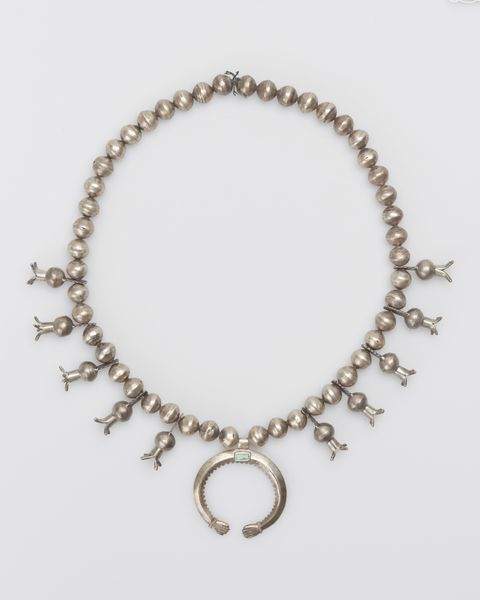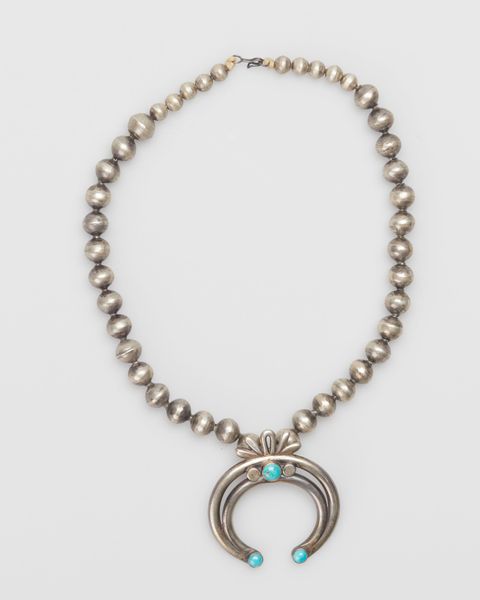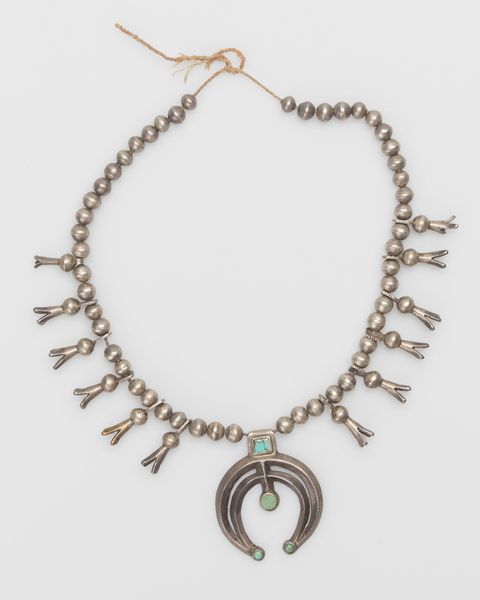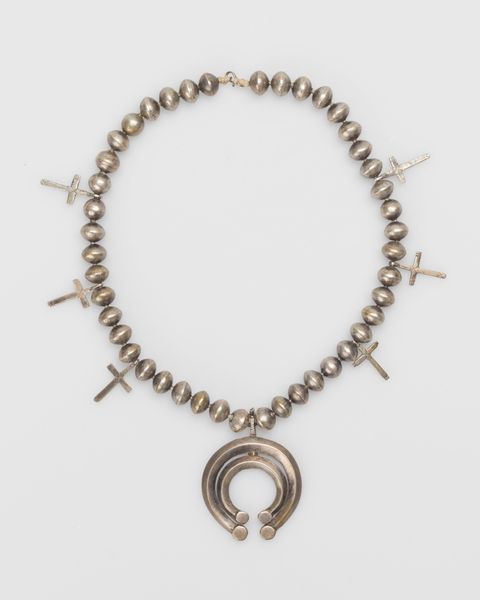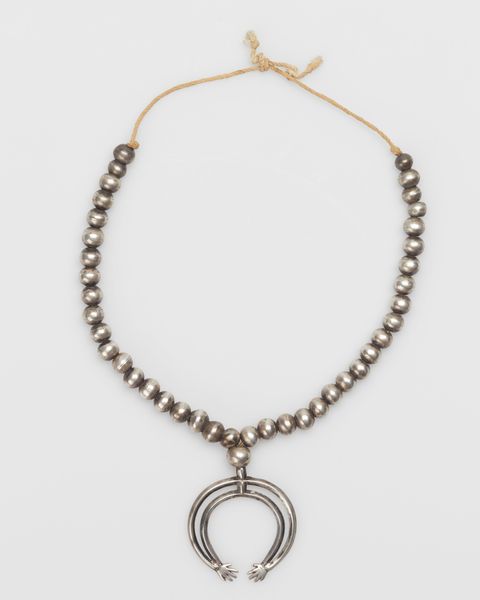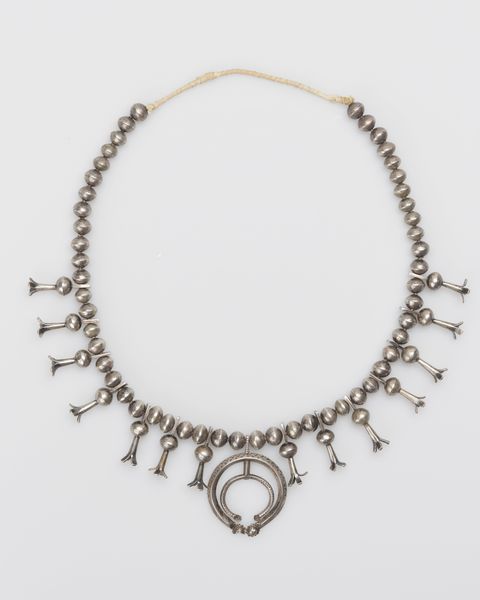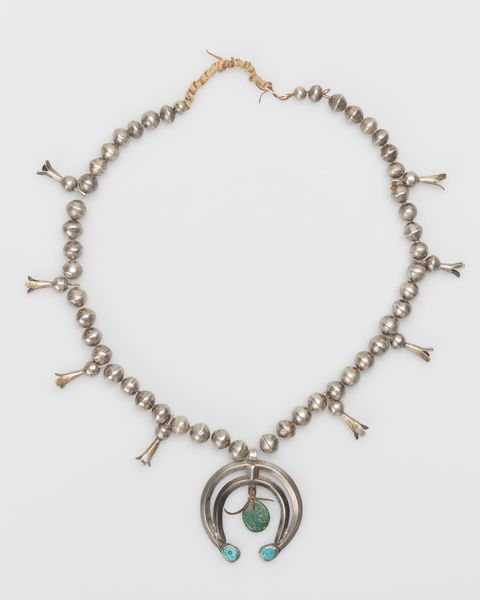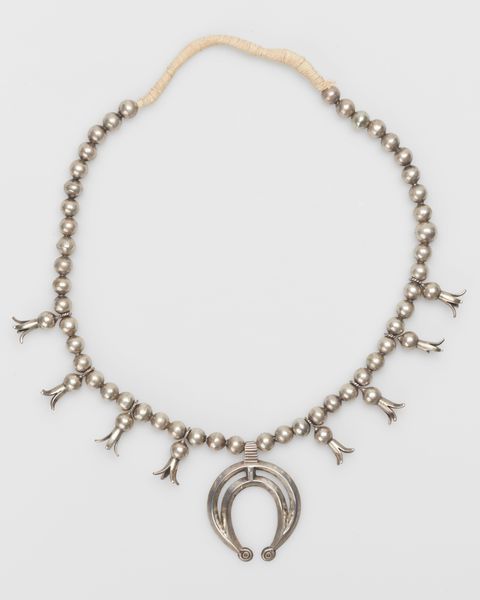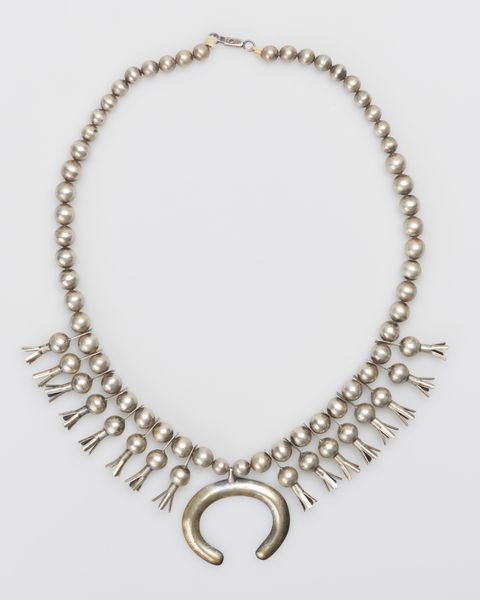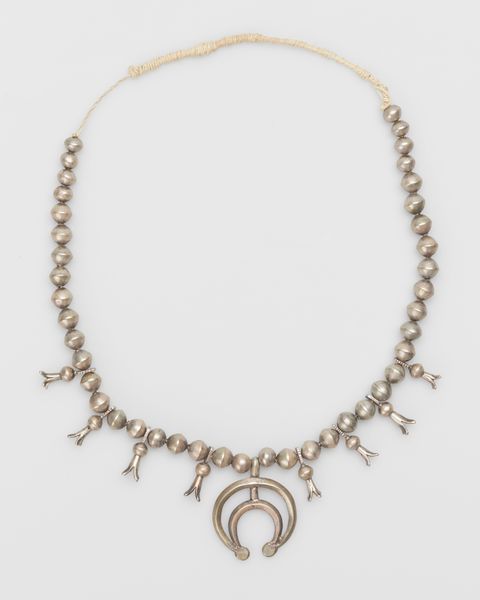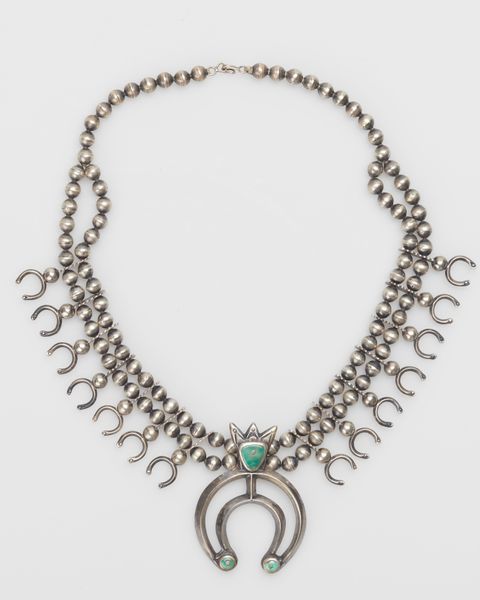
silver, sculpture
#
silver
#
sculpture
Copyright: Public Domain
Editor: This is a silver necklace from the 20th century, artist unknown, and it's currently held at the Minneapolis Institute of Art. It feels so austere, with the repetitive round beads. What strikes you about it? Curator: The repetition, you're right, isn't just aesthetic. It echoes traditions and the endurance of cultural symbols across time. The naja pendant, that crescent shape at the bottom, speaks volumes. What associations does it bring up for you? Editor: Hmm... it makes me think of the moon, maybe? Curator: Precisely. Across various Native American cultures, the naja, derived from the Spanish word for horseshoe, came to represent protection against evil spirits. It gradually evolved into a symbol of good fortune and cultural identity. You can find similar crescents adorning horse bridles for the very same reason. Editor: So it's not just decorative; it's functional, or at least spiritually protective. Do the other elements of the necklace hold similar meanings? Curator: More than likely. Every bead, the way they are strung, even the specific type of silver, carries potential symbolic weight. The repetition itself can be seen as a form of prayer or meditation, each bead a count towards a greater spiritual goal. Remember, nothing is truly arbitrary in such works. Editor: That’s fascinating! I’ll definitely look at these pieces of jewelry differently from now on. Thank you! Curator: The beauty of these pieces lies precisely in this unveiling – appreciating how outward appearances safeguard memory and identity.
Comments
No comments
Be the first to comment and join the conversation on the ultimate creative platform.
